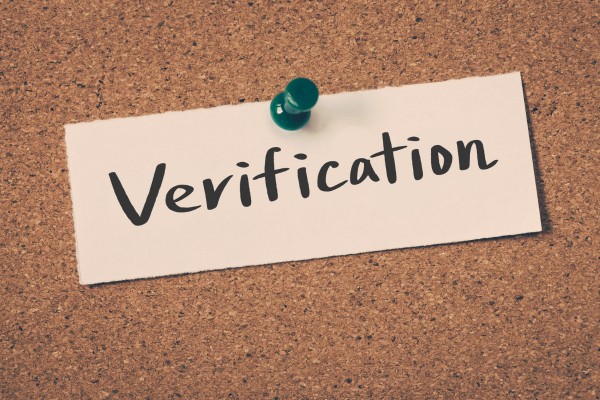Does SCRA Apply to Credit Cards After Joining the Military?
When you step into active duty, your responsibilities change in every direction, including your finances. The Servicemembers Civil Relief Act, or SCRA, was created to protect military members from financial strain during service. It ensures obligations like loans, interest rates, and court actions do not take unfair advantage of those serving the nation.
Yet a common question remains: Does SCRA apply to credit cards after joining the military? For many service members and their families, the answer matters because credit card debt is one of the most frequent financial challenges during active duty.
The details may surprise you, and understanding them could change the way you manage your accounts while serving.
Contents
- 1 What the SCRA Says About Credit Card Debt?
- 2 Does SCRA Apply to Credit Cards Opened After Joining?
- 3 Why the Timing of Debt Matters?
- 4 Other Protections That Still Apply?
- 5 Practical Advice for Servicemembers
- 6 How Military Verification Helps Creditors Comply?
- 7 Protect Your Rights with Proper Verification
What the SCRA Says About Credit Card Debt?
The Servicemembers Civil Relief Act, or SCRA, gives active duty servicemembers a powerful safeguard when it comes to credit card debt. Under this federal law, interest rates on eligible member accounts are capped at six percent, and this limit extends to late fees and transaction charges as well. Setting this ceiling, the Civil Relief Act ensures that service members can focus on their duties without being weighed down by high-interest charges back home.
The timing of when the debt was created is critical. SCRA protections apply only to debt incurred prior to active duty. That means if you had a credit card balance before your active duty start date, the creditor must lower your rate to six percent for the duration of your active duty period. Anything above that amount cannot simply be deferred; it must be permanently forgiven.
Consider a service member who opened a credit card before receiving military orders for the Marine Corps. Once they enter active duty, that account becomes eligible for the SCRA interest rate cap.
Families are not left out of these protections. Joint accounts are covered if one of the owners is the active duty servicemember and the debt was incurred prior to active duty service. For example, if you and your spouse share a credit card that predates your military service, the interest rate on that balance must also be reduced. This safeguard recognizes that financial obligations are often shared, and military spouses and family members may rely on the same accounts during deployments.
The SCRA also treats different types of debt in unique ways. Credit card debt is limited to the time a service member is actively serving, but mortgage loans receive extended relief.
Under federal law, the six percent cap continues for one year beyond the end of active duty military service, giving families more breathing room during the transition back to civilian life. This detail highlights how the law adapts to the realities of long-term commitments like home ownership.
Does SCRA Apply to Credit Cards Opened After Joining?
While the SCRA provides strong protections for pre-service debt, not every account qualifies. The law draws a firm line between obligations you carried into active duty and those you take on afterward. This distinction often surprises service members who assume all accounts are covered once they enter active duty military service.
If you open a new credit card after your active duty start date, the SCRA interest rate cap does not apply. The law was designed to ease the burden of debt incurred prior to active duty, not to regulate new borrowing.
For example, a National Guard member who applies for a new credit card while already serving will not see the six percent limit apply to that balance. Instead, the standard terms of the card agreement remain in place.
Timing also matters when it comes to requesting relief. You must notify your creditor in writing, usually with a copy of your active duty orders, and the request must be made no later than 180 days after your active duty period ends. Without this written notice, even accounts eligible under the Civil Relief Act may not receive the benefit.
This detail is especially important for service members who rely on credit during enlistment. Knowing that SCRA protections do not extend to debts incurred after joining can guide smarter financial decisions.
Why the Timing of Debt Matters?

When it comes to SCRA benefits, timing is everything. The law was never meant to cover every loan or credit card a service member opens. Instead, it protects debts that existed before active duty began, since those obligations were taken on without knowing the challenges of deployment, training, or sudden relocations.
Think of it this way: if you signed up for a credit card months before receiving military orders, the bank did not factor in the risk of you leaving for overseas duty. That is why the Civil Relief Act steps in, lowering your interest rate to six percent and wiping out anything charged above it.
But if you apply for a new credit card after you are already on active duty, the situation changes. At that point, you entered the agreement while fully aware of your military service, and lenders are not required to adjust the terms.
Here’s a simple breakdown:
| Credit Card Opened | SCRA Applies? | Interest Cap |
|---|---|---|
| Before Active Duty | Yes | 6% cap |
| After Active Duty | No | Regular APR applies |
Other Protections That Still Apply?
Even if SCRA protections do not cover new credit cards, service members are not without options. Other laws and safeguards can still help reduce risks tied to borrowing and debt.
Some states provide relief beyond federal law. Depending on where you live, you may have added protection against civil action or collection efforts while on active duty. These state-specific rules vary, so checking with a legal assistance office is often the best way to learn what applies to you.
The Military Lending Act, or MLA, is another major protection. Unlike the SCRA, which focuses on pre-service debt, the MLA covers certain credit accounts opened during active duty. It places a cap known as the Military Annual Percentage Rate, limiting charges and fees to thirty-six percent. This limit includes interest, credit insurance premiums, and other costs that lenders sometimes add. Spouses and dependents are also covered, which makes it valuable for families relying on credit.
There are also rules to stop creditors from crossing the line. In many cases, a lender must seek a court order before moving forward with repossession, contract termination, or aggressive collection tactics. If a creditor ignores written notice of your active duty status or charges above legal limits, you may have remedies in court.
Practical Advice for Servicemembers
Knowing the rules is one thing, but putting them to work in your favor is what really matters. The way you handle credit before and during service can determine whether you benefit from SCRA protections or need to rely on other safeguards.
If you have the chance before enlisting, think about consolidating balances or opening accounts you may need later. Credit card debt incurred prior to active duty service becomes eligible for the SCRA interest rate cap, which can save you a significant amount while you are serving.
For accounts opened after enlistment, look at what the Military Lending Act offers. The MLA covers certain loans and credit lines you may need during active duty, placing a limit on the Military Annual Percentage Rate at thirty-six percent. Military-friendly credit programs also exist, designed to fit the realities of active duty members and their families.
No matter when the debt was created, protections are not automatic. Creditors must be notified of your active duty status, and proof is required. You can provide a copy of your active duty orders or a letter on service branch letterhead signed by a commanding officer. The letter should state when your active duty service began. Verification can also be obtained through services such as MilitaryVerification.com or SCRACVS, which use DMDC records to confirm military status.
Timing is important as well. You can request SCRA relief while serving or within 180 days after your active duty period ends. Missing that deadline could mean losing benefits you have earned. Taking these steps early prevents mistakes and ensures that your eligible accounts are handled correctly under federal law.
How Military Verification Helps Creditors Comply?

Before a creditor raises an interest rate, begins collections, repossesses a vehicle, or files a civil action, federal law requires one important step: verifying whether the borrower is on active duty service. The Servicemembers Civil Relief Act (SCRA) makes this a legal obligation. Skipping it can result in penalties, court sanctions, or reversal of the action.
Verification is not just a technicality. It determines whether a service member qualifies for protections such as the six percent interest rate cap on credit card debt, mortgage loans, personal loans, or auto loans that were incurred prior to active duty.
These safeguards apply to all branches of the armed forces, including the Army, Navy, Air Force, Marine Corps, Coast Guard, National Guard when called to federal service, and commissioned officers of the Public Health Service and the National Oceanic and Atmospheric Administration.
For creditors, verification prevents costly mistakes and keeps them compliant with federal law. For active duty servicemembers and their family members, it guarantees that important protections under the Civil Relief Act SCRA are honored, from capped interest rates to safeguards against premature repossession or contract termination.
Protect Your Rights with Proper Verification
SCRA protections for credit card debt are clear: they apply only to accounts opened before you enter active duty. New accounts created after enlistment are not covered, which is why knowing the timing of your debt is so important. This single detail can shape how much interest you pay and what relief you qualify for.
For service members, clarity prevents frustration. For creditors, it prevents costly mistakes. Federal law requires verification of active duty status before collections, repossessions, or interest rate changes take place. Skipping that step can put both sides at risk.
SCRACVS gives lenders and law firms a fast way to confirm military status so obligations under the Civil Relief Act are met. For service members and their families, it ensures the benefits earned through service are actually applied. Proper verification keeps rights protected and compliance intact.






